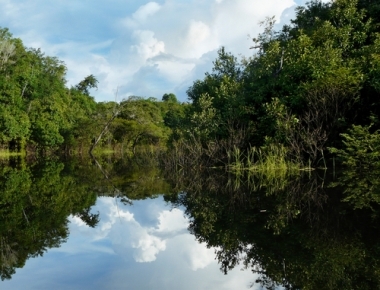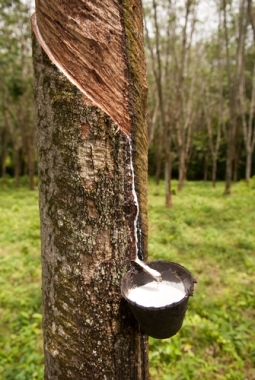With an area of approximately 5.5 million km², the Amazon rainforest it is the main vegetation cover in Brazil, occupying 45% of our territory, in addition to spaces in nine other countries, and is also the largest tropical forest in the world. It's called Equatorial broadleaved forest.
The Amazon Forest is characterized by being heterogeneous, with a high quantity of species, with about 2500 types of trees and more than 30 thousand types of plants. In addition, it is perennial, meaning it remains green throughout the year, not losing its leaves in autumn. It has a high density, which is conducive to the large number of trees per m².
It is customary to classify this forest according to the proximity of water courses. Thus, there are three main subtypes: igapó forest, floodplain forest and terra firme forest.
igapó forest: also called flooded forest, the igapó forest is characterized by being located very close to rivers, being permanently flooded. It has small plants compared to the rest of the Amazonian vegetation, which are usually hydrophilic, that is, adapted to humidity. It has, in general, raised roots that accompany the trunks.

The igapó forest is located on the banks of large rivers and is always flooded
floodplain forest: just like the igapó forest, the floodplain also suffers from flooding, but only during the flood period of the large rivers, as it is located in slightly higher areas. It is a very closed forest, with high density, tall trees (average 20m high) and, in general, with thorny branches, which makes access difficult. The best known species are Jatobá and Seringueira, the latter widely used in the extraction of latex, the raw material for rubber.
Do not stop now... There's more after the advertising ;)

Latex extraction for rubber production
dry land forest: also called caetê, the terra firme forest is characterized by being relatively distant from the great water courses, located in sedimentary plateaus. As a result, it is not usually the target of flooding, covering most of the forest and presenting the highest average height (some trees reach 60m).
The importance of the Amazon Forest lies mainly in its environmental function. However, contrary to what many people think, it is not the “lung of the world”, as the oxygen it produces is consumed by the forest itself. Its environmental importance lies in the control of temperatures, thanks to the increase in humidity, which is a result of constant evapotranspiration from the forest, producing masses of moist air for the entire South American continent, the calls flying rivers.
It is important not to confuse the Amazon Biome with the Amazon Forest. The first term refers to the general characteristics involving the forest, animals, rivers, soils and flora, the second is limited to the characteristics of the forest.
By Rodolfo Alves Pena
Graduated in Geography
Characterize the climate of the Amazon.


